Action Target engineers are doing more on the beaches of Florida this spring than just surfing or getting a tan: they are designing the biggest bullet trap ever built.
Lotus Gunworks of Jensen Beach, Fla., will be opening its doors next week and inviting shooters to try out its new double-decker shooting range featuring a two-story steel funnel bullet trap. Nicknamed the Lotus 8/11 for the number of steel panels used to create it (eight panels on the bottom slope and 11 panels on the top slope), this version of Action Target’s Total Containment Trap is the first of its kind.
“No one has ever seen a range like this before,” Lotus Gunworks’ Director of Operations Robbie Abell said. “We’re truly making industry history.”
Abell stumbled into the gun industry a few years back when he and a family member decided to go in on a gun store. It seemed like a crazy idea, he said, but with a little bit of luck and ingenuity, they just might be able to make it work.
“We spent about eight months riding around different areas and looking at gun ranges,” Abell said. “After some research, we ran into Action Target and were introduced to the local shooting range consultant Robb Anderson. After that it was a no-brainer, so we freight trained forward.”
They found an existing building in Jensen Beach that met their needs but quickly ran into issues when it became apparent there would not be enough room for two adjacent ranges and a gun store. Abell did not want to cut back on the number of ranges, so the only option was to make a double-decker range where both levels shot into the same bullet trap.
“It hasn’t ever been done before, and at first, the answer was that it couldn’t be done,” Abell said. “I believed there had to be a way, and after three weeks of pushing, I got a call from Robb at Action Target saying, ‘We think we might be able to do this.’”
The answer was to extend the Total Containment Trap (usually just 8 feet tall) to a whopping 19 feet and to mount steel cross beams to support the Mancom Touch ‘N’ Go target retriever system.
With the equipment issues resolved, the next hurdle was proper ventilation to prevent customers and employees from being exposed to hazardous lead dust. The sheer size of the room presented a unique challenge, so Lotus Gunworks enlisted the help of industry ventilation specialists Carey’s Small Arms Range Ventilation.
Despite doubts that a range that tall could be ventilated at all, Carey’s managed to create a system that not only met environmental standards, but exceeded ventilation standards for even federal shooting ranges.
“The air flow in the upper level was the best I have seen on any range, and the airflow on the bottom was also very good,” Carey’s controls and commissioning tech Mark Hanson said. “This was one of the easiest range ventilation systems we’ve installed.”
Aside from being environmentally safe by completely replacing range air every 80 seconds, all of the filtered air pumped into the range is refrigerated, which, according to Abell, is a pretty big deal in Florida.
“We want this to be the most comfortable range possible,” Abell said, “and we’re doing that with refrigerated air, great lighting, great service and friendly employees. We want people to come and stay. We want this to be a destination point where you hang out for the day.”
Lotus Gunworks is especially friendly to new shooters with a Ti Training simulation system that allows those completely new to shooting to try it out on a real gun equipped with a laser before hitting the range. Friday night fun shoots will also allow people to try out a variety of firearms including fully automatic rifles.
The range is expected to open for business the first week of April and will be holding a grand opening celebration April 20.







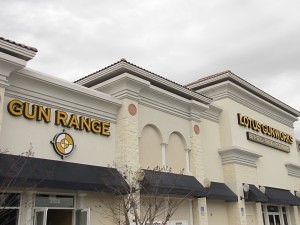
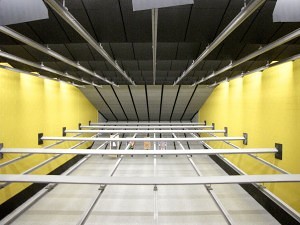
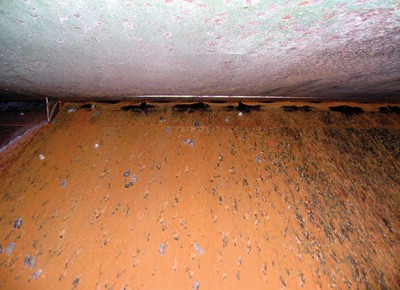 As with anything else in life, the ability to make an informed decision is based on the quality of the information you receive. The purpose of this article is to explore some of the claims associated with using water on steel funnel traps.
As with anything else in life, the ability to make an informed decision is based on the quality of the information you receive. The purpose of this article is to explore some of the claims associated with using water on steel funnel traps.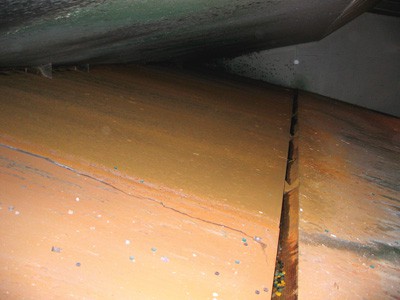
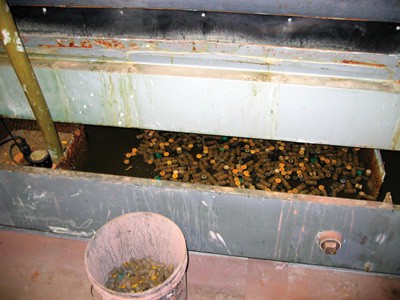
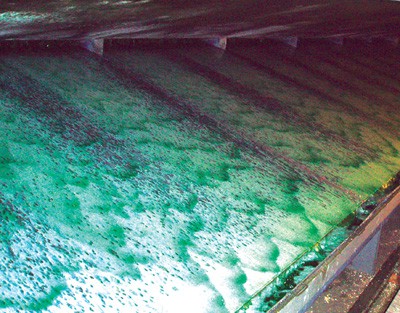
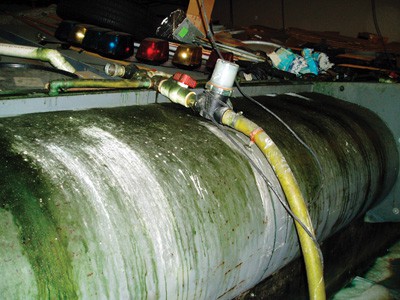
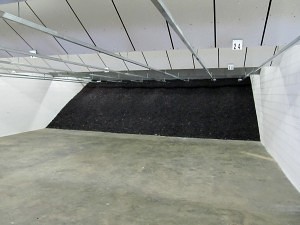 As we discussed in the first part of this article,
As we discussed in the first part of this article, 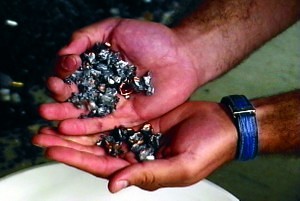
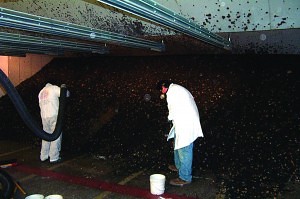 The first device is a large collection bin or “hopper” that spans the top of the trap. In certain cases, the chopped rubber has been found to migrate and flow toward the bottom of the trap leaving undesirably thin coverage near the top. When this happens, the extra rubber that accumulates at the bottom of the trap should be periodically collected and returned to the hopper. This process can be very labor intensive, and you should employ the same safety equipment and procedures used when cleaning the trap.
The first device is a large collection bin or “hopper” that spans the top of the trap. In certain cases, the chopped rubber has been found to migrate and flow toward the bottom of the trap leaving undesirably thin coverage near the top. When this happens, the extra rubber that accumulates at the bottom of the trap should be periodically collected and returned to the hopper. This process can be very labor intensive, and you should employ the same safety equipment and procedures used when cleaning the trap.
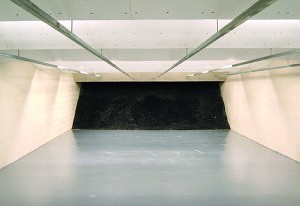 Because the rubber is a softer collection medium, ricochet and lead dust can be significantly reduced in some applications. Cross-range firing is safer, as is firing at extremely close distances. Such benefits make this trap an excellent choice for certain indoor ranges and other low-volume ranges where lead dust is a concern.
Because the rubber is a softer collection medium, ricochet and lead dust can be significantly reduced in some applications. Cross-range firing is safer, as is firing at extremely close distances. Such benefits make this trap an excellent choice for certain indoor ranges and other low-volume ranges where lead dust is a concern.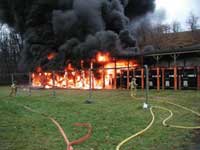
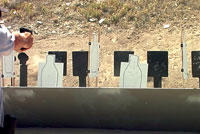
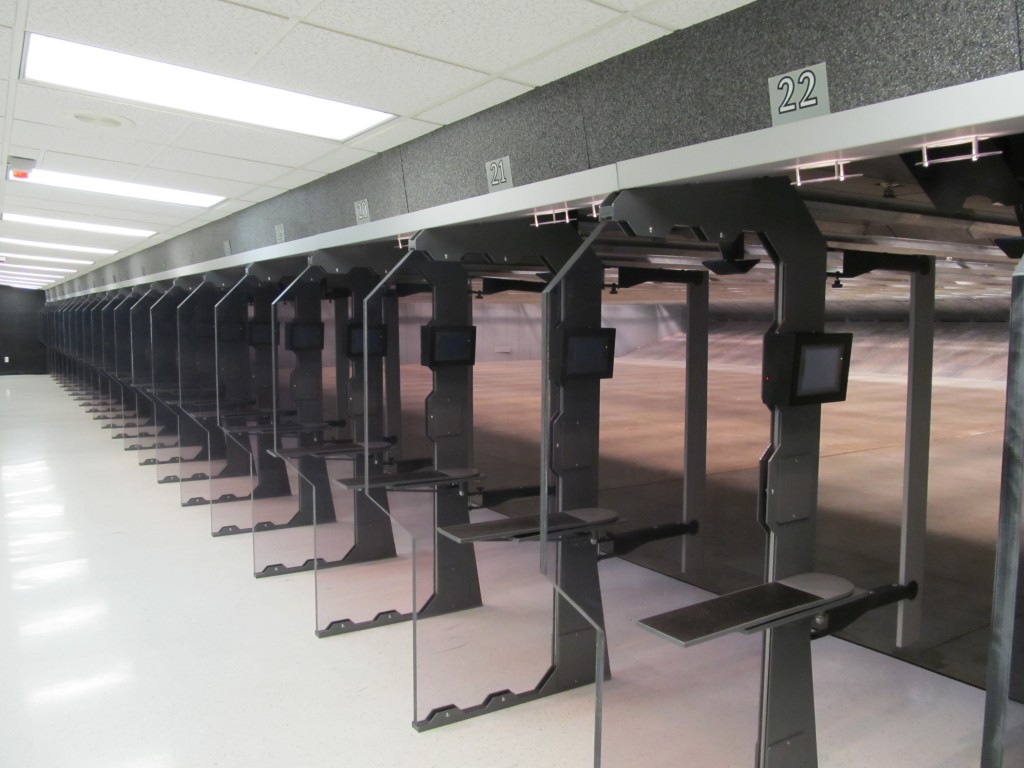 Because
Because 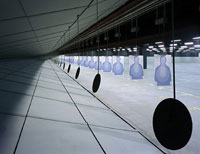 The Total Containment Trap is the dominant industry standard for modern, heavy-duty, steel bullet traps. It is the superior choice for ranges where safety, reliability, simple maintenance, and ease of use are top priorities. The TCT can be used both indoors and outdoors in all types of
The Total Containment Trap is the dominant industry standard for modern, heavy-duty, steel bullet traps. It is the superior choice for ranges where safety, reliability, simple maintenance, and ease of use are top priorities. The TCT can be used both indoors and outdoors in all types of  This is the same concept that is taking place when a bullet travels into the bullet trap. In front of the bullet there is a large wall of air that is being pushed into the trap. When a supersonic crack sounds, what is actually happening is that the bullet is breaking the shockwaves of air. This same air is what is being pushed in the bullet trap. If there were no dust collector on the bullet trap, the overpressure of the air entering the trap would collect surrounding particles and lead dust and shoot it back onto the range. This is where the dust collector becomes essential. The dust collector enables a negative pressure to be established inside the bullet trap, and it functions at a rate that is high enough to overcome the bullets and air pressure entering the trap. Referring again to the example of the cotton ball and the glass, if there was no back on the glass it would be easy to push the cotton ball to the rear of the glass by blowing on it. This is possible because there is no overpressure in the glass.
This is the same concept that is taking place when a bullet travels into the bullet trap. In front of the bullet there is a large wall of air that is being pushed into the trap. When a supersonic crack sounds, what is actually happening is that the bullet is breaking the shockwaves of air. This same air is what is being pushed in the bullet trap. If there were no dust collector on the bullet trap, the overpressure of the air entering the trap would collect surrounding particles and lead dust and shoot it back onto the range. This is where the dust collector becomes essential. The dust collector enables a negative pressure to be established inside the bullet trap, and it functions at a rate that is high enough to overcome the bullets and air pressure entering the trap. Referring again to the example of the cotton ball and the glass, if there was no back on the glass it would be easy to push the cotton ball to the rear of the glass by blowing on it. This is possible because there is no overpressure in the glass.
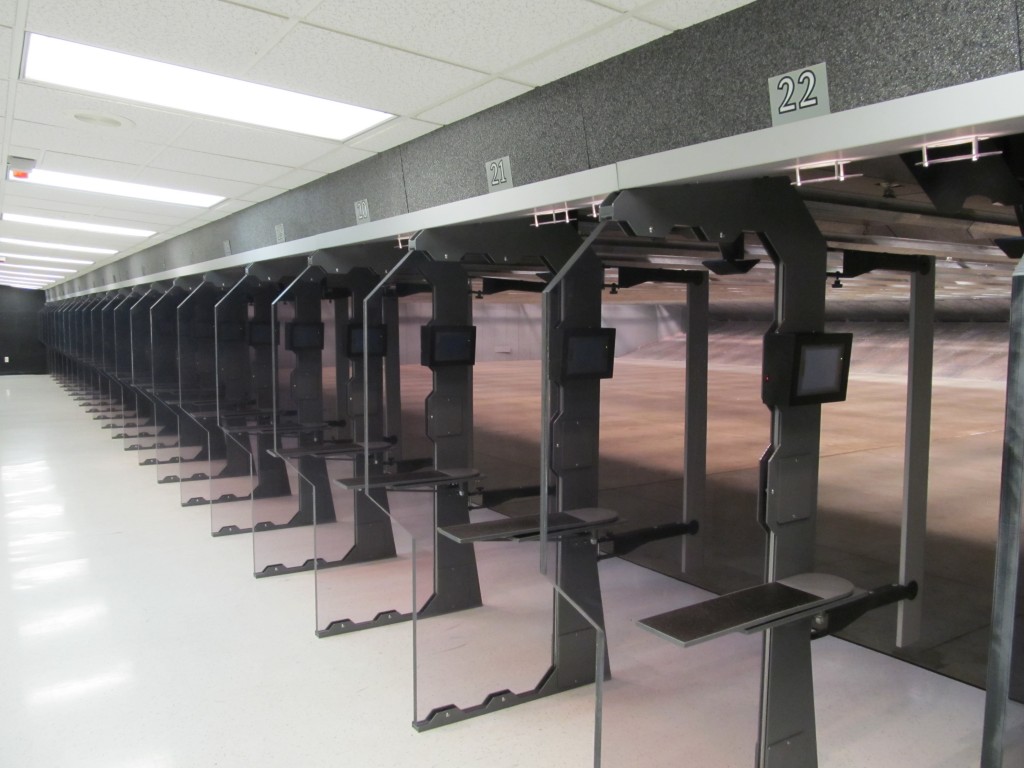 Action Target first worked with Ohio State Highway Patrol back in 1999 when we installed our “state of the art”
Action Target first worked with Ohio State Highway Patrol back in 1999 when we installed our “state of the art” 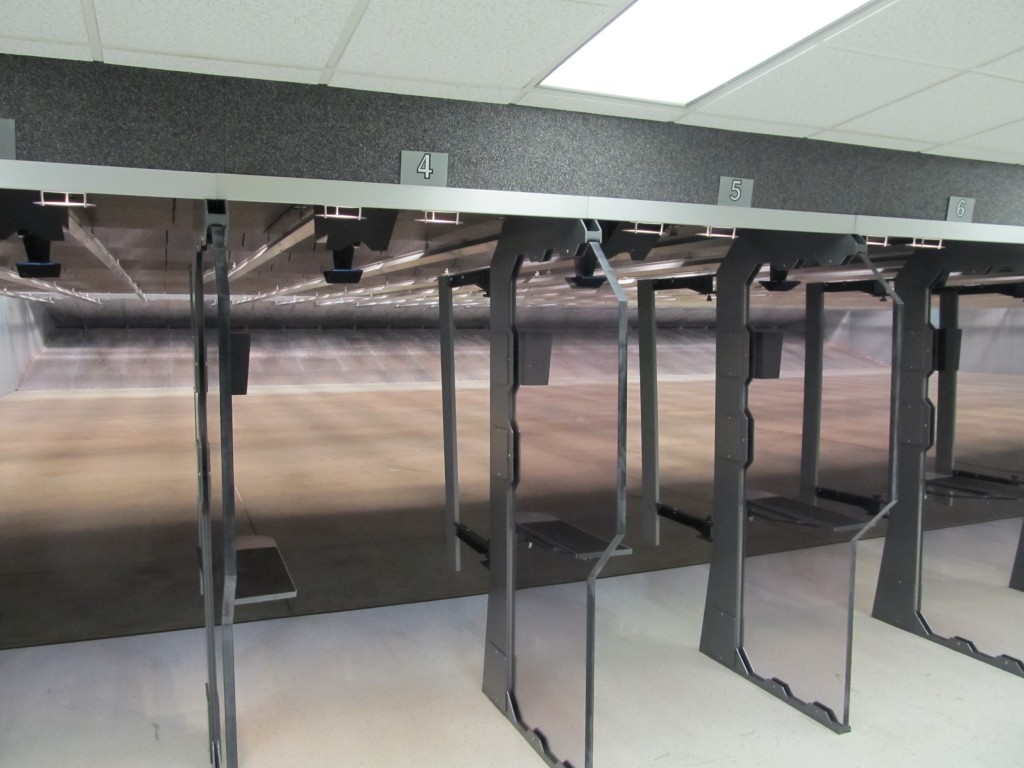 This 24 lane, 25 yard indoor range now provides officers a variety of training options, including timed training qualification courses and decision making drills. In addition, the total containment trap system, and
This 24 lane, 25 yard indoor range now provides officers a variety of training options, including timed training qualification courses and decision making drills. In addition, the total containment trap system, and 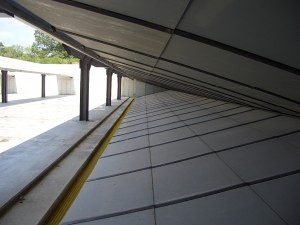 One of the most visited of these staffed ranges is the Jay Henges range in High Ridge, MO, located outside St. Louis. Range Supervisor Jake Hindman estimates that the range, which opened in 1994, receives 20,000 shooters each year. This continual high volume of fire led to maintenance and containment concerns regarding the inevitable lead remediation on the dirt berms. These concerns caused the Department of Conservation to decide it was time to invest in a “Total Containment Range” to eliminate costly lead clean up and maintenance while ensuring that no fired bullets left the shooing range.
One of the most visited of these staffed ranges is the Jay Henges range in High Ridge, MO, located outside St. Louis. Range Supervisor Jake Hindman estimates that the range, which opened in 1994, receives 20,000 shooters each year. This continual high volume of fire led to maintenance and containment concerns regarding the inevitable lead remediation on the dirt berms. These concerns caused the Department of Conservation to decide it was time to invest in a “Total Containment Range” to eliminate costly lead clean up and maintenance while ensuring that no fired bullets left the shooing range.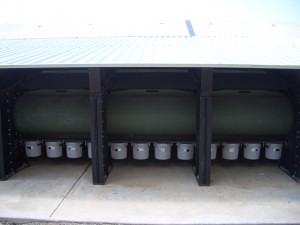 The Jay Henges Total Containment Trap measures 160 ft. wide with 20 shooting positions designed for heavy rifle use from the 100 yard firing line. The trap also features a unique self-supported engineered boom system that integrates into the frame of the bullet trap chambers, creating a support to the upper bullet trap plates without the need for a stand-alone truss system.
The Jay Henges Total Containment Trap measures 160 ft. wide with 20 shooting positions designed for heavy rifle use from the 100 yard firing line. The trap also features a unique self-supported engineered boom system that integrates into the frame of the bullet trap chambers, creating a support to the upper bullet trap plates without the need for a stand-alone truss system.